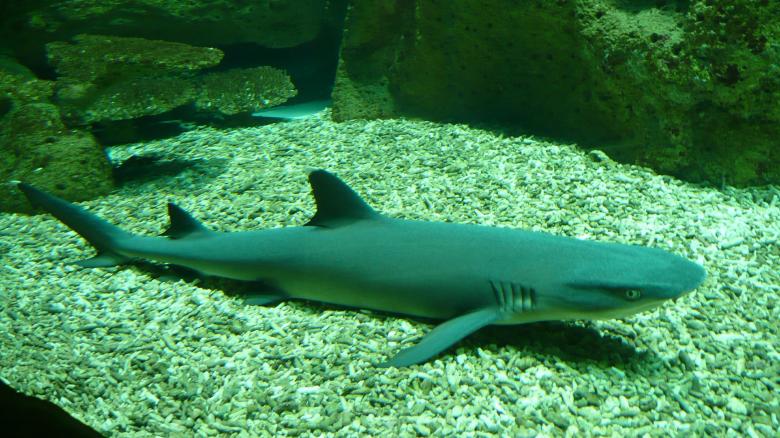Sharks are known to be one of the most powerful and gigantic creatures of the ocean. When you imagine a shark, you think about a huge dorsal fin breaking the water’s surface and a fearsome mouth filled with so many teeth. So, it’s natural that they would have a strong and sturdy skeleton underneath their skin, right? Well, the answer is no. Despite their extremely powerful bodies, sharks do not have bones.
We know it’s confusing, which is precisely why we will explore the idea of sharks not having bones in this article. We’ll discuss how sharks are elasmobranchs and what kind of structure holds them together, if not a skeleton. You’ll also get an idea of how sharks benefit from not having a normal skeleton with bones. So, let’s get right into this intriguing topic.
Do sharks have a skeleton?
The world has more than 500 known species of shark. Not a single one of them has bones. There is a subclass of fish known as elasmobranchs, as we mentioned before. Elasmobranchs are the type of fish that have cartilage instead of bones.
Now, you must be thinking about what cartilage is and how it holds the body of a gigantic shark together. Feel the soft, flexible material present in your nose, rib cages, and ears. This soft and flexible structure is known as cartilage.
Cartilage is softer and avascular. It is also found between the joints of our bones and the other places in our body where flexibility is needed. While humans have cartilage present in our bodies for specialized reasons, the entirety of the body, a shark, is made up of cartilage, with not a single bone present in their skeletal structure. This makes you think that sharks would be squidgy and soft like an octopus because of the absence of bones; however, that is not the case.
Why don’t sharks have bones?
If you ever see a shark in a movie or on TV, you’ll notice that despite not having bones, they are not squishy and have all the rigidity they need to cruise the heavy waters of the ocean. The structures of their skeleton that you would expect to have bones such as the fins, jaw, spine, and skull have hardened cartilage instead. The tough cartilages present in these structures help give them a rigid skeletal structure in order to protect the internal organs of the fish.
Like you can count the bones in a human skeleton, you cannot find out the number of cartilage present in a shark skeleton. This is because the cartilage is continuous instead of being a set of cartilage structures put together. The skeletal system formed by cartilage is different from that created by bones.
Marine biologists believe that sharks have developed cartilage instead of bones because it makes it easier for them to survive in their habitat.
One of the main distinctions which set cartilage apart from bones is that it is considerably less dense than bones. Bones are about twice denser than cartilage. Because of this density difference, sharks have an advantage of a flexible and lightweight structure.
Such structure allows sharks to have the incredible speed to hunt food and escape predators such as killer whales and marlins. Sharks don’t have a swim bladder. It means they depend on their oil-filled livers to help them afloat and not sink to the bottom.
If the sharks had a bony skeleton, it would mean they would need to evolve a larger liver. This would be an extreme disadvantage because it would add even more weight to the already heavy body of a shark, and they would require more food to be in good health.
Sharks have good maneuverability, which is an advantage when they are evading predators or hunting food in the water. Because the cartilage has elastic properties, sharks are able to open their mouths much wider to catch food.
The sharp, toothed snout of the shark can be used to prod and probe objects in the water. Sharks use it as a sense organ thanks to it being made up of cartilage instead of bones. If it were made of bones, it would obviously be hard, ultimately making it more susceptible to damage. Sharks are able to use the sharp snout as a sense organ only because it has soft cartilage.
Sharks don’t have bones, so they must have another organ to make white blood cells, red blood cells, and platelets, right? Well, sharks use their spleen to make them. In some sharks, the WBCs, RBCs, and platelets are produced in Leydig’s organ.
All of these things are proof that sharks function well without a bony skeletal structure. The cartilage, where needed, uses additional calcium to sacrifice flexibility and make room for increased strength. This, when it happens, changes the cartilage into calcified cartilage, which appears bone-like.
The areas of their body which require additional strength and rigidity develop calcified cartilage while the other parts remain soft and flexible.
Despite not having bones, sharks are at the apex of any water body where they are present. This makes their development of bones into cartilage an excellent evolutionary choice. A skeleton having both flexible areas and rigid structures, all made up of cartilage, is extremely useful for the habitat that sharks live in.
Conclusion
As we have seen, none of the over 500 species of sharks has bones. All of them have complex and highly evolved cartilaginous skeletons, which give them a better edge than most species in oceans. A calcified cartilage skeleton, as we discussed before, is the essential factor in making sharks what they are, one of the most magnificent creatures on the planet Earth.







